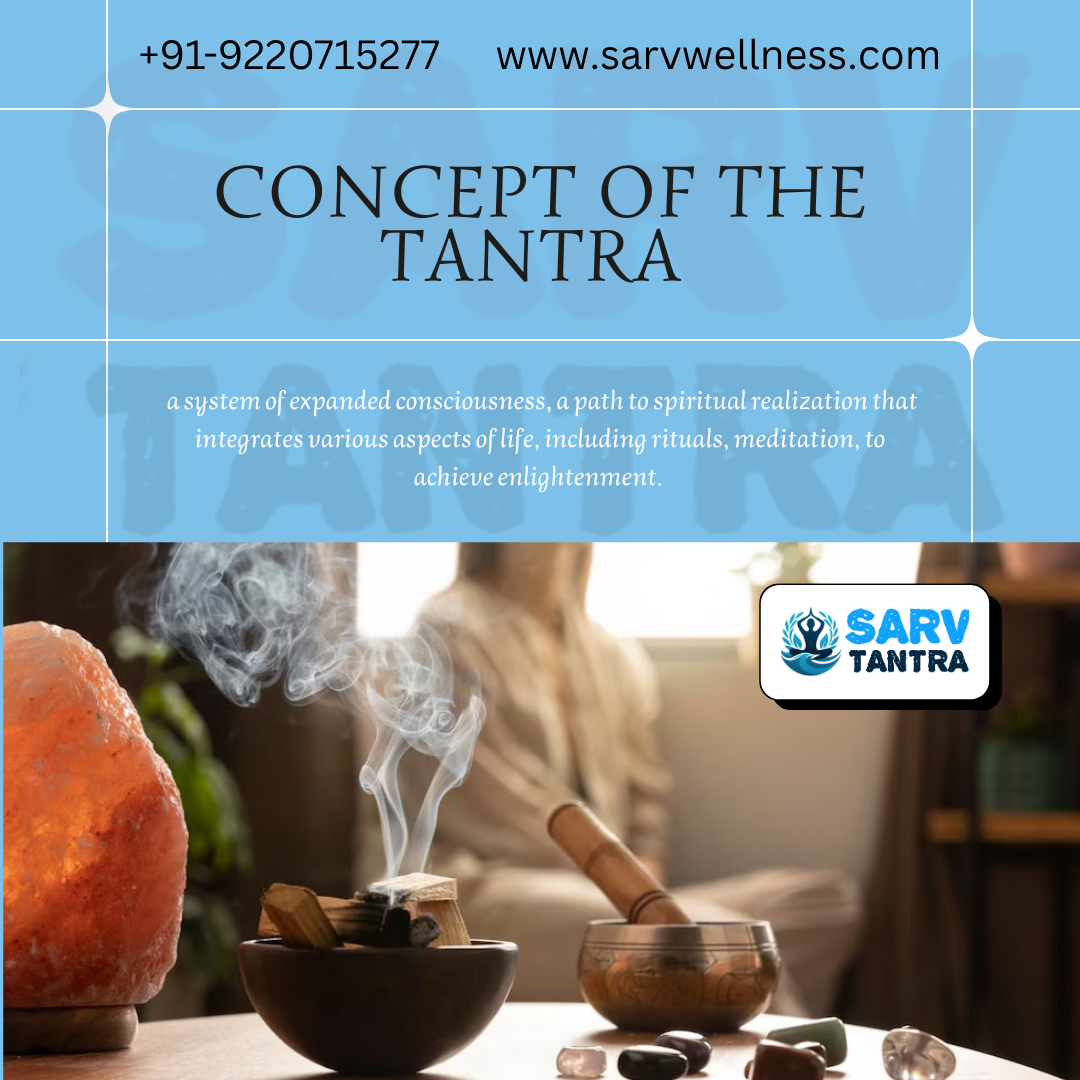Tantra Therapy vs Traditional Massage : What’s the Difference?

Tantra Therapy vs. Traditional Massage: Key Differences and Why It Matters
In today’s fast-paced world, people seek relaxation, stress relief, and inner balance through different healing modalities. While traditional massage has been a long-standing choice for physical relaxation and pain relief, Tantra Therapy has been emerging as a holistic alternative for those seeking deeper emotional, energetic, and spiritual healing. At first glance, they might seem similar—both involve touch and a calming experience. However, Tantra Therapy and traditional massage are fundamentally different in their goals, techniques, benefits, and overall experience. Understanding these differences can help you choose the practice that truly aligns with your needs.
Difference B\W in Traditional Massage & Tantra Therapy
1. Purpose and Philosophy
The primary difference between Tantra Therapy and traditional massage lies in their intent and philosophy.
-
Traditional Massage is primarily focused on physical healing. Its goal is to reduce muscle tension, improve blood circulation, alleviate stiffness, and promote relaxation. Most traditional massage modalities—like Swedish, deep tissue, or Thai massage—are grounded in anatomy and physiology. They target muscles, tissues, and joints to restore physical comfort and mobility.
-
Tantra Therapy, in contrast, is rooted in the ancient principles of Tantra, which views the human being as a union of body, mind, and spirit. It focuses on balancing prana (life force energy) and awakening the energy channels (nadis) and chakras (energy centers) in the body. Tantra Therapy doesn’t just aim to relax the body—it helps release emotional blockages, restore energetic flow, and connect the client to a deeper state of self-awareness and peace.
2. Techniques Used
The techniques used in both practices differ significantly.
-
Traditional Massage Techniques involve kneading, pressing, tapping, long gliding strokes, and stretching to relieve muscle tension and improve flexibility. Oils or lotions are used to reduce friction and enhance comfort. The focus is almost entirely on the physical body, with little to no emphasis on breath, energy, or meditation.
-
Tantra Therapy Techniques go beyond the physical. Sessions typically combine guided breathwork (pranayama), energy activation practices, chakra alignment, sound therapy (using singing bowls or mantras), and gentle, mindful touch to stimulate the flow of prana. Sometimes, therapists use tools like herbal dhoop (incense), cooling oils with natural herbs, buzz magnets, or crystal wands to amplify energy balance. The touch in Tantra Therapy is intentional, slow, and meditative, designed to calm the nervous system and guide the client into a deeper state of awareness and healing.
3. Experience and Atmosphere
The session experience is another key difference.
-
Traditional Massage usually takes place in a spa or wellness center with a calming environment—dim lighting, soothing music, and aromatic oils. The experience is relaxing but focused on muscle relief and comfort.
-
Tantra Therapy Sessions are designed to create a sacred and meditative atmosphere. The therapy space often includes soft lighting (like Himalayan salt lamps), herbal incense, sacred symbols or mandalas, gentle background chants or binaural beats, and natural fabrics (cotton or silk) to enhance energy flow. Clients are guided into deep breathing and mindfulness before the session begins, which sets the stage for a transformative, almost ritualistic healing journey.
4. Physical vs. Energetic Healing
-
Traditional Massage works primarily on the muscles, joints, and circulatory system. Its benefits include reduced tension, pain relief, improved flexibility, and temporary stress reduction.
-
Tantra Therapy addresses physical, emotional, and energetic layers simultaneously. By clearing blockages in energy channels and balancing chakras, it helps with stress release, emotional healing, improved breath and energy circulation, spiritual connection, and a longer-lasting sense of inner calm and vitality. Many clients describe feeling lighter, more centered, and deeply rejuvenated after a Tantra Therapy session, beyond just physical relief.
What is Tantra Therapy?
Tantra Therapy is a holistic healing practice that combines ancient Tantra principles with modern therapeutic techniques to help balance the body, mind, and energy system. Unlike traditional massage, Tantra Therapy is not just about physical relaxation—it works on the subtle energy (prana) within the body to promote emotional release, spiritual growth, and inner harmony.
Tantra Therapy uses a blend of breathwork (pranayama), guided meditation, chakra alignment, energy activation techniques, and mindful, therapeutic touch. In some sessions, tools like herbal dhoop (incense), crystals, sound bowls, magnets, or cooling herbal oils are also used to help clear energy blockages and stimulate deep relaxation and spiritual connection. The goal is to awaken and balance the life force energy (prana) so that the client feels lighter, more centered, and deeply at peace.
Key Benefits of Tantra Therapy:
-
Balances Chakras & Energy Flow: Clears blockages in the body’s energy channels, helping prana move freely.
-
Releases Emotional Stress: Helps release trapped emotions and past traumas, creating emotional lightness.
-
Promotes Deep Relaxation: Calms the mind, reduces anxiety, and creates a meditative state.
-
Improves Breath & Vitality: Breathwork enhances oxygen flow and energizes the body.
-
Supports Spiritual Growth: Helps the client feel more connected to themselves and their inner energy.
-
Enhances Overall Well-being: Brings harmony to the physical, emotional, and spiritual self for a long-lasting sense of peace.
What is Traditional Massage?
Traditional massage involves a therapist using techniques like kneading, pressing, gliding, tapping, and stretching on the body’s muscles and soft tissues. The goal is to relieve pain, reduce stress, loosen tight muscles, and promote overall relaxation. Oils or lotions are often used to reduce friction and make the experience more comfortable.
Types of Traditional Massage (Examples):
-
Swedish Massage: Gentle, long strokes for relaxation.
-
Deep Tissue Massage: Firm pressure to target deep muscle layers.
-
Thai Massage: Stretching and acupressure techniques.
-
Hot Stone Massage: Uses heated stones to relax muscles.
What are the Different types of massage technique?
1. Swedish Massage
-
Technique: Long, gliding strokes, kneading, and circular motions using oil.
-
Purpose: General relaxation, stress relief, and improved circulation.
-
Who It’s For: People looking for a gentle, relaxing massage.
2. Deep Tissue Massage
-
Technique: Firm pressure applied to deeper layers of muscles and connective tissues.
-
Purpose: Relieves chronic pain, muscle knots, and stiffness.
-
Who It’s For: Athletes, people with muscle injuries or tension.
3. Thai Massage
-
Technique: Stretching, yoga-like postures, and acupressure (performed on a mat, fully clothed).
-
Purpose: Improves flexibility, circulation, and energy flow.
-
Who It’s For: Those who prefer a more active, movement-based therapy.
4. Hot Stone Massage
-
Technique: Smooth, heated stones placed on specific body parts and used with massage strokes.
-
Purpose: Relieves muscle stiffness, improves circulation, and promotes deep relaxation.
-
Who It’s For: People with tension or who enjoy heat therapy.
5. Aromatherapy Massage
-
Technique: Uses essential oils combined with light to medium massage strokes.
-
Purpose: Enhances relaxation, mood, and emotional well-being through scent therapy.
-
Who It’s For: Anyone wanting a relaxing, mood-lifting experience.
6. Shiatsu Massage
-
Technique: Japanese method using finger pressure on specific acupoints.
-
Purpose: Balances energy flow (Qi), reduces stress, and supports healing.
-
Who It’s For: Those seeking a traditional Eastern approach to healing.
7. Reflexology (Foot Massage)
-
Technique: Applying pressure to specific points on the feet (sometimes hands and ears) that correspond to organs.
-
Purpose: Stimulates energy flow and supports organ health.
-
Who It’s For: People looking for relaxation and energy balance through foot therapy.
8. Sports Massage
-
Technique: Combination of deep tissue, stretching, and targeted pressure.
-
Purpose: Helps athletes recover from workouts, prevent injuries, and improve performance.
-
Who It’s For: Active individuals and sportspeople.
9. Lomi Lomi Massage (Hawaiian)
-
Technique: Flowing, dance-like strokes using forearms and hands.
-
Purpose: Promotes relaxation, energy harmony, and emotional release.
-
Who It’s For: Those seeking a spiritual and deeply relaxing massage.
Differnce B\W Tantra Healing & Massage:
| Aspect | Tantra Healing | Massage Therapy |
|---|---|---|
| Purpose | Balances energy, clears emotional blockages, promotes spiritual growth. | Relieves muscle tension, improves circulation, reduces stress. |
| Techniques | Breathwork, chakra alignment, energy activation, sound therapy, mindful touch. | Kneading, gliding strokes, tapping, stretching, deep tissue work. |
| Focus | Holistic (mind, body, and energy field). | Physical body (muscles, tissues, and joints). |
| Experience | Meditative, spiritual, and transformational. | Relaxing and physically therapeutic. |
| Benefits | Emotional release, energy balance, inner peace, spiritual connection. | Muscle relaxation, pain relief, stress reduction, improved flexibility. |







